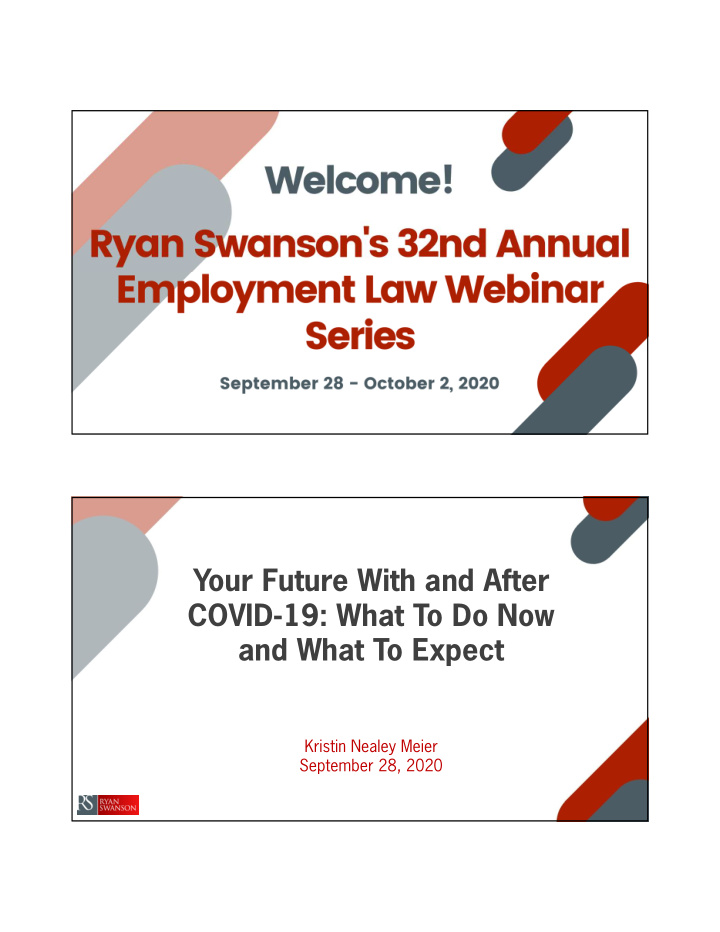



Your Future With and After COVID-19: What To Do Now and What To Expect Kristin Nealey Meier September 28, 2020
Families First Coronavirus Response Act (FFCRA) – Employers with fewer than 500 employees Emergency sick leave Family leave Expires December 31, 2020 3 3 Americans with Disabilities Act (ADA) – Implications due to COVID-19 Cannot inquire about disability-related medical issues If individual is a “direct threat,” not protected by nondiscrimination provisions of ADA COVID-19 has been deemed a “direct threat” which affects ADA analysis Cannot require employees to take a vaccine https://www.eeoc.gov/laws/guidance/pandemic-preparedness- workplace-and-americans-disabilities-act 4 4
Employee contracting COVID-19: on the job? Occupational Safety and Health Administration (OSHA) investigations Workers’ comp – Employment Security Department (ESD) issued guidance that most coronavirus-related claims will not be accepted. https://lni.wa.gov/agency/outreach/workers-compensation-coverage-and-coronavirus- covid-19-common-questions “When the contraction of COVID-19 is incidental to the workplace or common to all employment (such as an office worker who contracts the condition from a fellow employee), a claim for exposure to and contraction of the disease will be denied.” 5 5 Employee contracting COVID-19: on the job? Lawsuits for negligence If “deliberate intention,” could allow lawsuits rather than workers’ comp. Early round of liability lawsuits filed against employers are focused on whether employers followed state and federal guidance for combatting the virus' spread, such as the use of face masks and physical distancing. As of late July, nearly 70 lawsuits claiming exposure. Potential exception for healthcare workers in some situations What can you do? Follow Department of Health (DOH), Centers for Disease Control (CDC), and other guidelines 6 6
Wage Claims for Work-From-Home Transition Still must track hours, pay overtime for nonexempt employees Easy to answer email, do work “off the clock” Even if good system in place, if not during initial transition, could still be liable Go back and confirm directives in place, any documentation you have 7 7 Return to Work and Continued Telecommuting High Risk Employees may need to continue telecommuting through all phases ADA implicated with high risk employees Other employees may want to continue telecommuting even if everything opens up. Can you force them? 8 8
Best Way to Protect Yourself Document steps taken to implement COVID-19 restrictions Document steps taken to screen for COVID-19 symptoms Document how you handled stay-at-home order, exceptions for Essential Workers, handling of High-Risk Employees The date these steps were taken is important 9 9 Thank you. Kristin Nealey Meier Ryan, Swanson & Cleveland, PLLC 206.654.2293 kmeier@ryanlaw.com www.ryanswansonlaw.com 10
Recommend
More recommend